Soundproof the Floor. Combat Foot Noise.
Most common floor/ceiling assembly systems are built with a single framing structure that separates upstairs from down, but connects the rooms structurally. As people walk, talk, work and thrive upstairs, their noise bleeds to the rooms down below via structure born vibrations, which passes energy through, and creates an unfriendly environment. Foot noise is often the biggest culprit, as people walk the floors upstairs, their noise easily seeps to the rooms below. This creates disturbance as privacy, comfort and protection are compromised. Wondering how to soundproof floors? Quiet is just one call away. Welcome to your soundproofing floors solution.
Questions? Call 1-800-638-9355
Floor Soundproofing Step 1: Disconnection
The key to soundproofing floors in a residence is to first force the disconnection between upstairs and down. This is accomplished by either raising your flooring surface up above, or lowering your ceiling down below, so that at least one of the two surfaces is disconnected from the structure of your building. Think of it as snipping a string pulled tight between two coffee cans, forcing the collapse of the structure born vibration. We want the vibration of your noise to die inside your assembly, rather than transmit through.
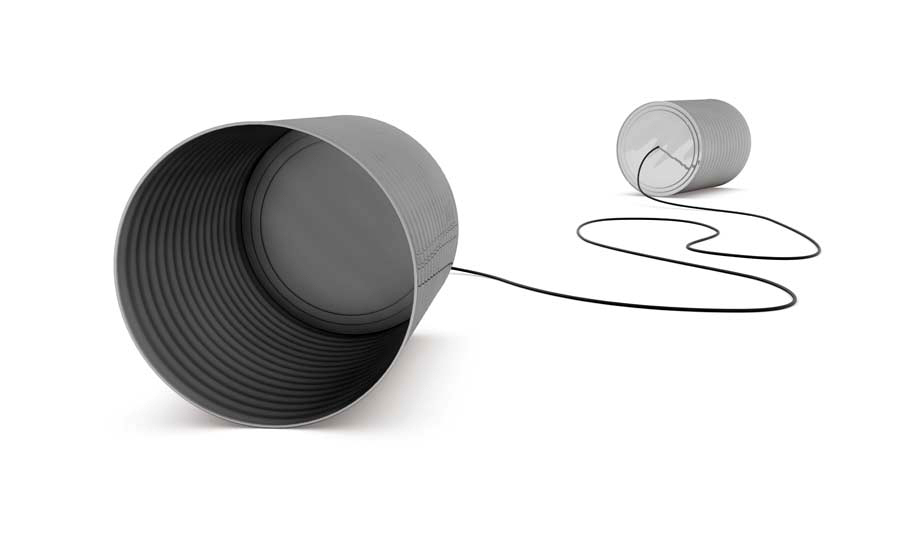
Soundproofing Floors Step 2: Density
The second half of your floor soundproofing equation is to then line the common assembly with additional density. Density impedes vibration, much like placing the flat of your hand against a guitar string so that it cannot emit sound vibrations. Your goal is to either line the ceiling below your floor or line your flooring surface with a dense membrane that can layer into your assembly. If you have access to your sub floor, floor soundproofing begins with the installation of our popular floor under layment called FloorFighter.
And it just so happens, that by lining your flooring surface with FloorFighter, you will also be raising your finished flooring surface up off the floor, disconnecting its structural connection points to the room down below. With FloorFighter, we deliver both the density and the disconnection your common assembly requires.
See FloorFighter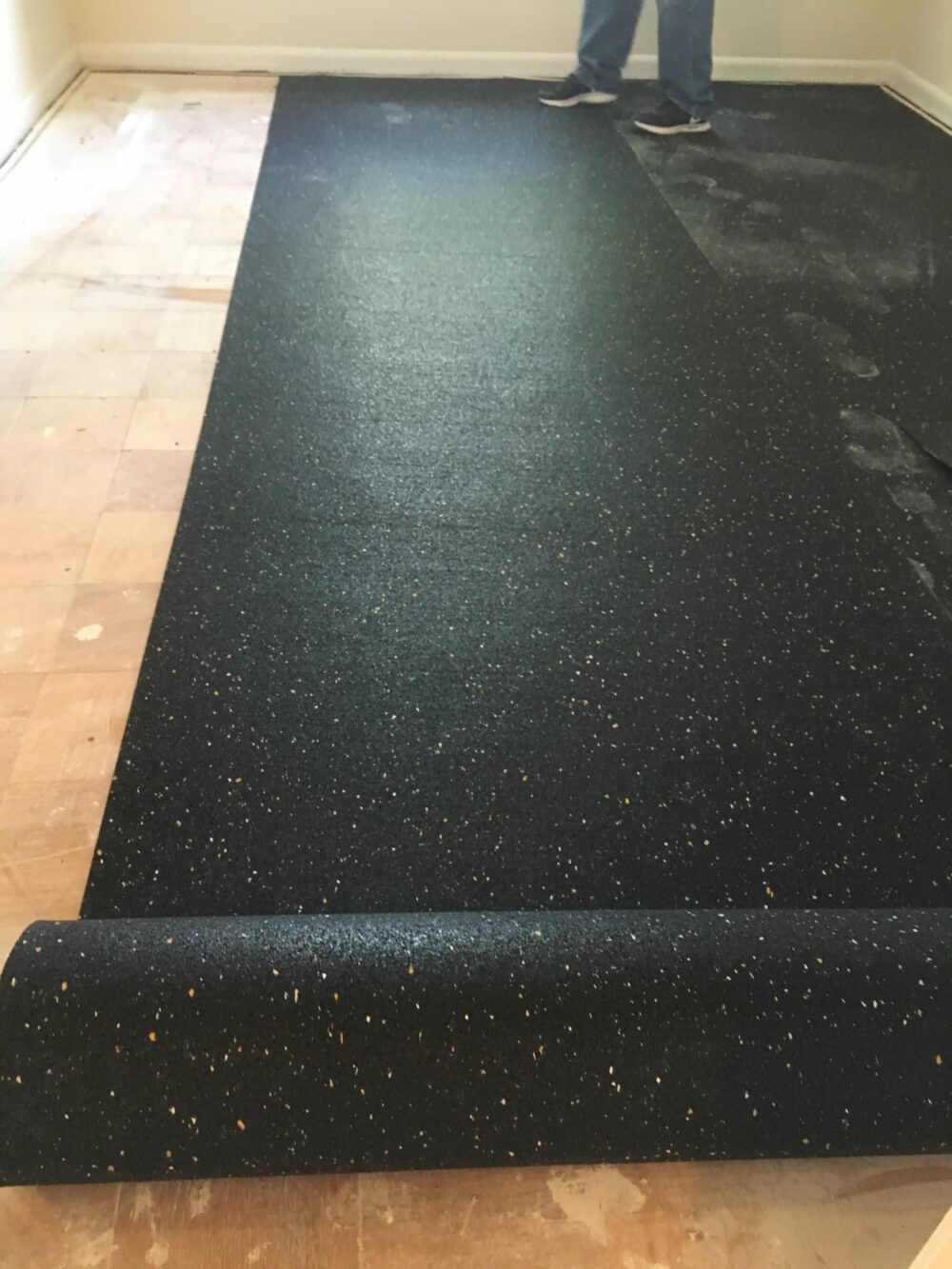
No Sub-Floor Access?
No problem. Soundproofing floors starts with the determination as to whether you have access to your sub floor or not. If you are in a new build, a remodel, or have a finished flooring surface that you can temporarily remove, (rolling back carpet, lifting laminate flooring) then we proceed ahead with treating your floor up above for sound isolation, with FloorFighter, rather than your ceiling down below. But if your starting point is a finished flooring surface that you are unable to treat, your alternative is to layer dB-Bloc into your ceiling assembly down below, as we showcase is in our Ceiling section of this website.
Treat Ceiling Instead 1-800-638-9355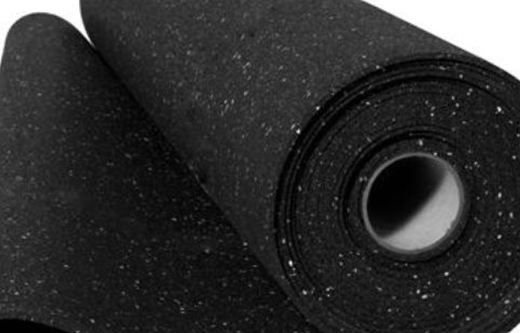
Floor Soundproofing Underlayment Blocks Noise
FloorFighter is a ultra dense, ultra thin sound barrier membrane that layers beneath your finished flooring surface. The density of the product will impede the vibrations (guitar string) caused by foot traffic and other noise upstairs. The underlayment will also serve to lift your finished flooring surface up and away from the structure of your sub floor and disconnect your contact to the room down below (string/cans).
By using FloorFighter you provide density from the membrane and disconnect by lift the flooring surface up and away from your structure. This forces the collapse of the vibration, giving you a soundproof floor that protects the room below from the noise up above.
See FloorFighter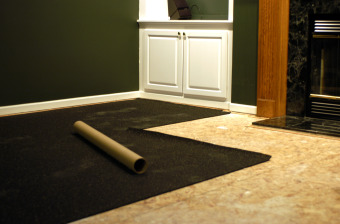
Why Clients Love our Floor Soundproofing Underlayment
FloorFighter is a free floating membrane that will ship to your doorstep in 4’x25’ rolls. It measures just ¼” thick, but weighs 100 pounds per roll. The treatment is easy to install, and delivers back the comfort and quiet you are seeking.
1-800-638-9355
See Case Study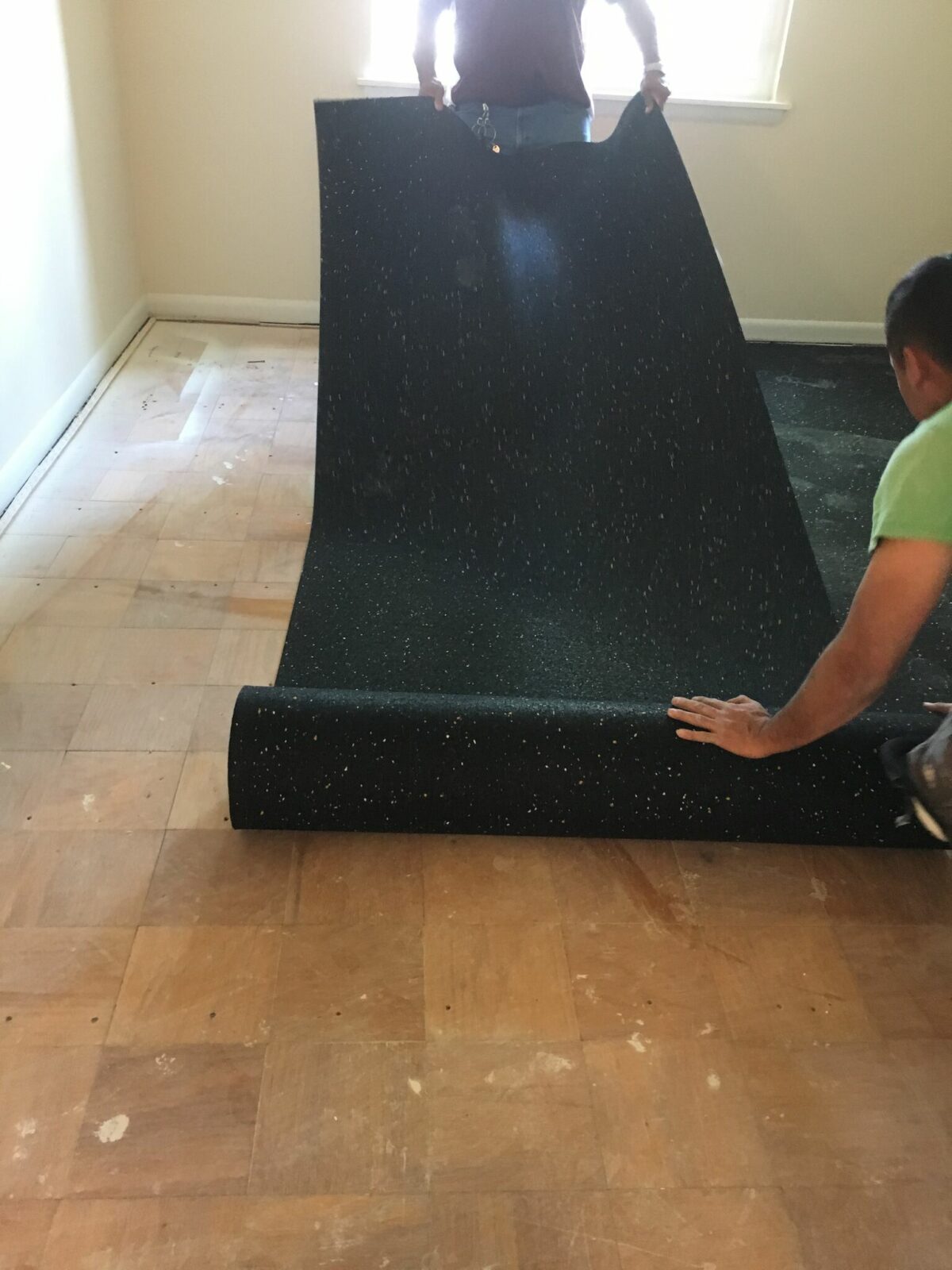
Floor Soundproofing: Q&A
How do you soundproof a new floor?
The goal with building a new floor from scratch is to lift and separate the finished flooring from the structure of the building that supports the floor. Often called a floating floor, a soundproof floor can be produced by layering a membrane beneath the finished surfaces to help lift and separate the finished flooring surface from the structure below it. See our Floorfighter to learn more about soundproofing floors.
How do I block footnoise from upstairs?
The structural points between rooms include the joists that support both the upstairs flooring substrate and the downstairs drywall finished ceiling. The joists, or cement slab, are connecting the rooms together structurally and delivering vibrations back and forth in a common floor ceiling assembly. Foot noise is impact noise that travels along this vibration path. To properly soundproof a floor, the finished surface must be lifted up and away from the structure to force a collapse in the transmitting vibration.
How do I soundproof my floor upstairs?
Like a string pulled tight between two coffee cans, sound waves will carry along common contact points before becoming airborne at the other end of the path. The same holds true for common floor or ceiling assembly noise. The energy is transmitted structurally by vibrating through the floor joists or cement slab. It’s then released as airborne noise to the adjoining space. Special care must be taken when attempting floor soundproofing to produce the necessary structural separation that forces the collapse of the sound wave. The goal is separation. Either with a floor underlayment upstairs, or an isolated clip system on the ceiling down below.
Does soundproofing a floor work?
Underlayments are ideal for soundproofing floors. They serve to lift the finished surface up and away from the structure that connects the rooms together. By forcing the disconnection, the floor underlayment will decouple foot noise by absorbing its impact, thus minimizing the strength of the vibration. The finished floor will then “float” up and off the substructure of the floor, separated by the floor underlayment, which in turn will absorb and decouple the structure born vibrations.
How Do You Treat a Finished Floor for Noise Bleeding?
If your floor is carpet or laminate, you can temporarily remove the flooring surface and layer a sound barrier beneath it. The underlayment is called Floorfighter. If you are unable to remove your existing floor surface, your only option is to soundproof the ceiling as illustrated in our Ceiling Soundproofing section.
What is a floor underlayment?
A floor underlayment is a sound barrier membrane that’s layered beneath your flooring surface to help deaden foot noise and other noise that could spread into the room below. When soundproofing the floor of any given room, it’s ideal to have access to the subfloor, except for those with finished flooring surfaces. The material ships in 4×25’ rolls and measures .25” thick. For questions related to soundproofing, contact our help desk at 1-800-638-9355.
How to install a floor underlayment?
The sound barrier underlayment simply rolls out onto your subfloor and free floats. You’ll then add your finished flooring surface on top of it. Note that if you are putting down a glued floor, we will need to know in advance, so that we ship you the version of Floorfighter that can take the adhesive. Also note, if you are putting down a tongue in a groove wooden floor, the Floorfighter should be placed underneath your subfloor, not on top of it, so that you are nailing the flooring directly into the subfloor. For questions related to your floor soundproofing installation, call our help desk at 1-800-638-9355.
What Are the Benefits in Using Floorfighter Under My Flooring Surface?
Noise exposure levels that bleed from the upstairs to the downstairs can effectively be blocked with the layering treatment called FloorFighter. The sound barrier membrane will deaden noise levels in most any commercial or residential setting, if you have access to the subfloor and are able to get the membrane properly installed beneath your finished flooring surface.
Contractor's Sign Up
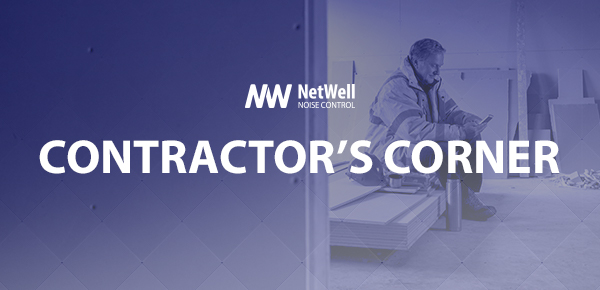
Contractor’s Corner
For contractors in the building trade, with an interest in the advanced techniques for soundproofing common wall, ceiling and floor assembly’s in today’s market, we invite you to sign up for our Contractor’s Corner. This is a free online newsletter that delivers messaging to the building trade on the latest techniques for combating noise bleed between adjoining spaces. For you drywallers, framers, architects and general trade contractors out there, welcome to our family of third party sound insulation experts. We look forward to servicing you and your customers with our noise mitigation products and treatments!